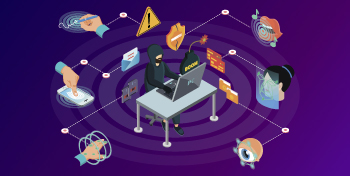From critics to fans, many famous people have ever released their predictions about Bitcoin. Although it is too early to say who will be right, history shows that experts ‘ predictions about new technological innovations are often not true.
Why 95 percent of all crypto predictions fail
Two of the world’s most famous and respected investors, Warren Buffett and Charlie Munger of Berkshire Hathaway, were particularly un apologetic about the BTC. In 2018, Buffett called Bitcoin “rat poison squared”, while Buffett’s business partner Charlie Munger went even further, comparing Bitcoin to trading “freshly harvested children’s brains”. In 2014, Jamie Dimon, CEO of JP Morgan, stated: “The question is not whether the Bank accepts Bitcoins, but whether we cooperate with people who contribute to the development of crypto”.
Could they be right? They could have been. Although it is too early to say who will be right, history shows that experts ‘ predictions about new technological innovations are often not true.
Here’s a prediction you can rely on: 95 percent of predictions about what the price of an individual coin will be at the end of the year will be completely wrong.
And five percent of the predictions that actually come true will be correct only by pure chance. After all, even a stopped clock shows the correct time twice a day.
If you’ve subscribed to a Facebook group or viewed Reddit forums, you’ll be familiar with posts and articles that “predict” the price of a currency in six months or at the end of the year.
These articles clearly increase traffic, because everyone wants to know what coin the “moon” will be. Smartereum has an article on price forecasting for almost every cryptocurrency on the market. They claim that VeChain will trade at $ 19.63 by the end of the year and $ 75 in five years. In December, Tron will cost $ 1.10, and if you invest $ 100 in Iota now, you will get $1,782 by 2020.
Finder reports that Bitcoin Cash will be $ 3,083 by December, the Daily Express reports that Ethereum could reach “wild highs” of $ 100,000 per coin (at some point), while Profit Confidential predicts that Ripple will reach $ 10 before the end of the year.
Crypto sage and madman John McAfee famously predicted that by the end of 2020, Bitcoin will be worth $ 500,000, or otherwise it will “eat its s… on TV.” He then doubled his forecast to 1 million. (Let’s hope that his prediction comes true, at least for this very good reason.)
Many forecasts simply extrapolate what will happen if current trends continue. So if a coin grew by 10 percent last year, people tend to predict that it will grow by 10 percent again this year. Here’s how Crypto Daily found out that Ripple will be worth “about $ 2,000” within 12 months (which seems unlikely since the market cap will be $ 200 trillion).
Cryptocurrency markets are particularly difficult to predict because they are based on speculation rather than fundamentals. It is difficult for the market to evaluate anything correctly.
But even in the “real” stock market, forecasts are rarely reliable, and they just often don’t come true.
For example, in December 2007, five months after the subprime mortgage crash, the Wall Street Journal interviewed 51 economists and asked them to predict what would happen to the economy in 2008. No economist predicted a recession, although it has already hit the economy-the middle of the global financial crisis. This demonstrates that economists can’t even predict a recession when they are already in a recession. (Ironically, in December, a WSJ poll found that 96 percent of economists believe Bitcoin is in a bubble.)
Professor At The University Of California, Berkeley Philip E. Tetlock applied a scientific approach to forecasting and asked 284 experts in political science, Economics, history, and journalists to make a total of 82,361 predictions about the future. After comparing the predictions with what actually happened, Tetlock concluded that most experts achieved few better results than”a chimpanzee playing darz.”
As for cryptocurrencies, he found that the more confident the “expert” is in his forecast, the more likely it is that he will make a mistake. So the guy who tells you without a shadow of a doubt on Reddit that the coin “can’t fail” and definitely “goes to the moon” doesn’t know what’s going to happen next.
The story of the famous prophecies

Chris Dixon, General partner at venture capital firm Andreessen Horowitz, wrote in 2010:”be careful with new products for the reason that any big thing always starts with being rejected as a toy.”
Dixon’s essay is worth reading, and it is as relevant today as it was ten years ago. His thesis is based on the theory of” disruptive technologies ” by Clay Christensen. The idea is that technologies tend to improve faster than the needs of users.
Dixon says breakthrough technologies are often dismissed as toys at first because they don’t take user needs into account at launch. There are many examples of this. The first phones could only transmit voices for a mile or two. Western Union, the leading telecommunications company at the time, refused to buy the phone because it did not understand how it could be useful.
What they couldn’t have foreseen was how quickly phone technology and infrastructure would improve due to network effects. Dixon says that the same applied to how mainframe companies viewed PCs (microcomputers), and how modern telecommunications companies viewed Skype.
From this perspective, many early Bitcoin critics may fall into a similar category. As the network effects of the BTC increase, its adoption accelerates. Networks are different from other types of technologies – a connected set of devices becomes a network, and networks grow according to this exponential curve. Metcalf’s law States that the impact of a telecommunications network is proportional to the square of the number of connected users of the system (n2).
Industry representatives may be particularly blind to innovative new technologies if they have financial incentives to protect the status quo.
It may take time for society to realize that what we understand about the world and the near future was completely wrong. Many famous scientists once believed that the Earth is flat. Some lost souls are still convinced of this.
The same thing is happening today. Many “expert opinions” on issues like Bitcoin, global warming, the economy, and how to respond to a global pandemic are completely wrong.
However, it may take years for new science and research to uncover the truth. There have been many cases in history where science has taken time to uncover the truth, and society has taken even longer to accept it. Even when it seems like all the research is available, it’s only much later that we see how little we knew.
Here are 10 examples of experts, commentators, presidents, and industry representatives who made bold predictions that turned out to be completely wrong.
- “The horse is forever, and the car is only a novelty, a fad.” – President Of Michigan Savings Bank.
- “Who the hell wants to hear actors talk?” – X. M. Warner, Warner Brothers, 1927 on sound cinema.
- “This’ phone ‘ has too many disadvantages to be seriously considered as a means of communication.” – Western Union internal note, 1876
- “Traveling by rail at high speed is impossible, because passengers who are unable to breathe will die of asphyxia. – Dr. Dionysus Larder, writer and academic, 1828
- “Remote purchases, while feasible, will not be successful” – Time Magazine, 1966
- “X-rays are a bluff” – Lord Kelvin, President of the Royal society of science, 1883
- “I think that the global market will only need five computers.” – Thomas Watson, Chairman of IBM, 1943
- “Television will not be able to hold any market that it captures after the first six months. People will soon get tired of staring at the plywood box every night.” – Darryl F. Zanuck, head of 20th Century-Fox, 1946
- “The growth of the Internet will slow down dramatically, as the flaw in Metcalf’s law, which States that the number of potential connections on the network is proportional to the square of the number of participants, becomes obvious: most people have nothing to say to each other. By about 2005, it will be clear that the impact of the Internet on the economy is no greater than that of the Fax machine.” – Paul Krugman, winner of the Nobel prize in Economics, 1998
- “15 of your cases will almost be reduced to zero. How? It’s like this: when you have 15 people, and in a couple of days their number is reduced to zero – this is a pretty good job that we did.” – Donald trump, President of the United States, February 26, 2020
Conclusion

So what should I do? Well, instead of thinking about price forecasts, it might be better to think about hypothetical future scenarios for a particular coin.
The purpose of this article is to encourage you to personally search for information for yourself, and not allow you to form your opinion solely based on the opinions of others. This applies to experts who oppose a certain point of view, and those who support it.
Before you give your opinion on the possible cost of a cue ball, or a potentially revolutionary new technology, take the time to learn about the possible consequences, both negative and positive. Read the opinions of those who support it and those who are against it. And ask yourself, what are the motives of this or that commentator? They are biased due to the fact that the new technology will affect their industry and income? What impact will this have on their current business model? Maybe that’s the point?
In 2014, at the Institute of international Finance’s annual meeting, JPMorgan Chase Chairman and chief Executive Jamie Dimon said that ” cryptocurrency developers are going to eat our lunch. And this is normal. This is called a competition, and we will compete.”
Perhaps some skeptics of the PTS are simply biased against it, because it poses a threat to the existing status quo. This was the case in 2014 and remains true today. By 2030, we should have a clearer idea of whether Bitcoin is a failed experiment with a small value or a global store of value with a network that protects trillions of dollars.
We need more reasoned investment projects, and fewer people pulling forecasts out of thin air.


